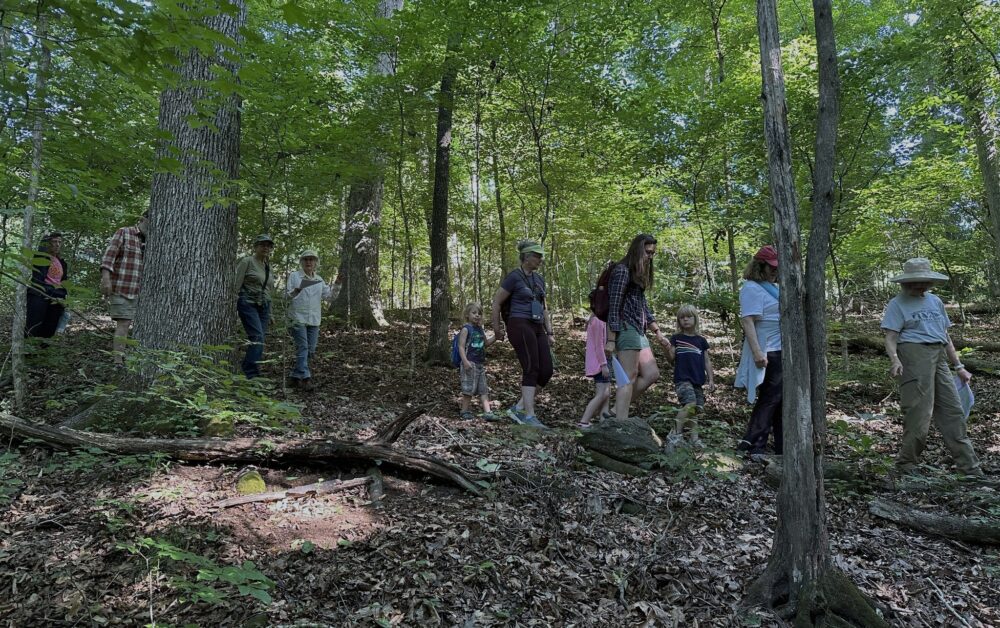Events of interest to Ramblers:
Fri., Oct.
4, 2013 9:00AM – 10:30AM
Linda Chafin
on Piedmont Prairies
State
Botanical Garden of Georgia
Our big native plant sale at the
Mimsie Lanier Center for Native Plants is this Friday and Saturday!
Friday, Oct 4, 6:00pm
– 7:00pm is an SBG Friends Members event – preview party and sale. You
can become a Friends Member at the door!
Species
list is on the SBG website, http://botgarden.uga.edu/eventdetails.php?id=13
Saturday,
October 5, 2013. 9 AM – 2 PM General Public
Welcome!
2450 S. Milledge
Ave. Athens, GA 30605
This event is
free!
Don Hunter’s
wonderful photos of today’s Ramble are here.
We thank Don for allowing us to use a selection of his photos for our blog.
Several
people brought readings for today, but we only had time for two. Please bring
yours next time. Lee read a story of a
revolutionary war soldier who stopped to think about the ways of a mocking bird. Then Sandra read a very appropriate poem on
Kudzu.
This morning about two o’clock, as I
was walking up and down past one of my sentinels, in order to keep myself
awake, I was very agreeably surprised by the singing of a mocking-bird. He sang
by himself and continued his notes till daylight. One would have imagined that
he was sensible of the merit of his accomplishments, and that it was in
complaisance to man as well as for his satisfaction that he was pleased to sing
when all was silent, (except the barking of some dogs) Nothing animated him so
much as the stillness of nature; twas then that he composed and executed all
his tones. He raised from seriousness to gaiety, and from a simple song to a
more sportive warbling, from the lightest quivers and divisions he softened
into the most languishing and plaintiff sighs, which he afterwards forsook to
return to his natural sprightliness.
(from: William Feltman, “Diary of the Pennsylvania
Line. May 26, 1781 – April 25, 1782, in Pennsylvania in the War of the Revolution,
Battalions and Line, 1775-1783, ed. John Blair Linn and William H. Egle, vol. 1
(Harrisburg: Lane S. Hart, 1888), p. 689.)
Next was a poem by Oliver (“Ollie”)
Reeves, poet laureate of Georgia from 1944 to 1963, presented by Sandra
Hoffberg:
Song of the Kudzu Vine
The Kudzu vine is a hardy plant
And it grows where other good vines can’t;
Where the land is poor and the clay banks stand
And the gullies run through the tortured land.
Here it spreads its leaves on the wasting loam
And it sends it roots and clusters home.
And it saves the farmer hours of toil
As it spreads these roots to hold the soil.
Ah, you may have watched the black snake run
To the shaded hole from the blistering sun,
And you may have stood at the old race track
As the thoroughbreds came thundering back;
And you have seen the swallow’s flight,
And the shooting star in the deep dark night,
But until you’ve watched kudzu grow,
You’ve never seen the fastest show,
Over the rock piles, under the brush,
Climbing the hillsides on with a rush,
Down the ditches, into the glade
Shielding the earth with a comforting shade.
There goes kudzu ever in flight,
Swift in the sunshine, swifter at night.
Happy the hog and grateful the kine
Nourished by food that’s held in the vine,
Happy the farmer, happy the day
Gathering kudzu, tossing the hay,
Come join the chorus, help us to sing
Down with erosion, “Kudzu is king!”
Today our
theme was vines. We do not always have a
theme, but this was a request from Sandra and Joan. They missed last week when we started working
on vines, so today we went on a vine hunt.
Our trail took us down the white trail by the Callaway building to the
Orange Cut-off, left on the cut-off trail to the Orange trail. Right on the Orange trail through the
Powerline ROW, to the big tree by the Privet experiment sign. We then turned around following the white
trail back to the Lower Parking Lot.
Continue reading →


